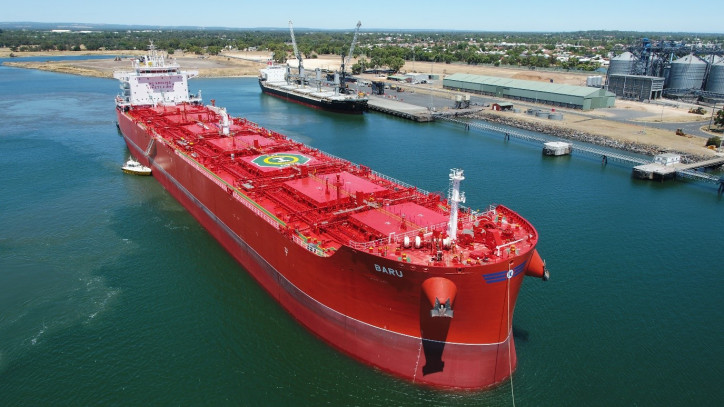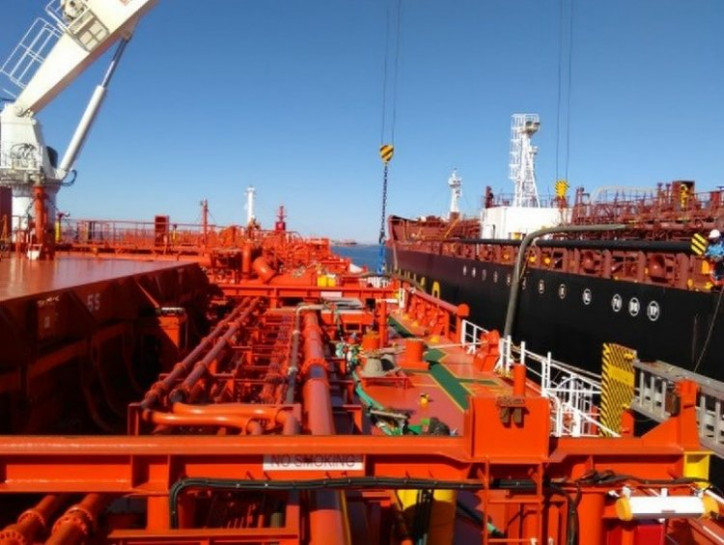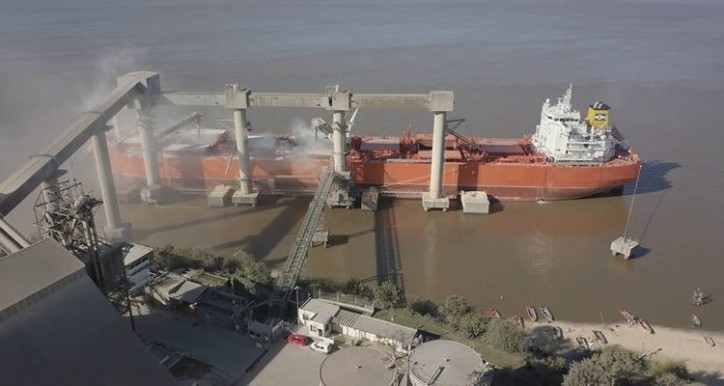The first cargo switch for Company’s new CLEANBU fleet
This week Klaveness CLEANBU MV Baru successfully made the first switch from wet to dry cargo, the first cargo switch for Company’s new CLEANBU fleet. The vessel transported a full cargo of petroleum products (CPP) from India to Argentina. After discharging the CPP, she completed the cleaning and conversion from tanker mode to dry bulk mode, loaded a grain cargo and is now en route back to Asia.

Strong cleaning capabilities with cleaning result available for online inspection on new digital application
After discharging of CPP, MV Baru successfully completed cleaning and conversion from tanker mode (as a LR1-tanker) to dry bulk mode (as a Kamsarmax bulk carrier). Having industry-leading cleaning capabilities, MV BARU passed all the strict cleaning inspections from the grain cargo surveyors prior to her loading. The cleaning result was for the first time also available for digital inspection by customers on the new Klaveness and DNV-GL Veracity created inspection platform.
A significant contribution to reducing greenhouse gas emissions from shipping
On this round-voyage, the CLEANBUs safely performed the transportation work of both a LR1 tanker on the inbound leg, and a Kamsarmax bulker for the return cargo. This efficient trading with minimum ballast results in significant savings in energy consumption and emissions per ton of cargo transported. For this specific trade alone her estimated fuel savings compared to these standard vessels can be estimated to be approximately 1,200 mts. Savings in CO2 emissions are approximately 3700 mts, being equivalent of annual CO2 emissions from around 1,000 cars.

On average, a Kamsarmax vessel would have to ballast about 25 days in order to reach East Coast South America for these grain cargos, however, with the inbound CPP cargo the CLEANBU ballasted for less than 2 days between these two cargoes. If a regular LR1 tanker had performed the MV Baru’s voyage, this vessel would have to reposition for her next employment, ballasting to the next loading port which could typically be back to PG, Continent, Mediterranean or US Gulf, all requiring a ballast voyage of around 2-3 weeks.

Fleet growth in the coming years
The CLEANBU fleet now consists of two vessels with the MV Barracuda delivered end July and the third vessel MV Barramundi will join the fleet in September this year.
“We are looking forward to a safe and successful introduction of these two newcomers to the market and look forward to their contribution in reducing the environmental footprint from deep-sea shipping.”
Source: Klaveness